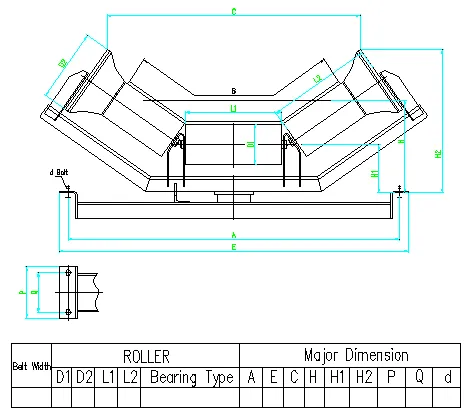 Afrikaans
Afrikaans  Albanian
Albanian  Amharic
Amharic  Arabic
Arabic  Armenian
Armenian  Azerbaijani
Azerbaijani  Basque
Basque  Belarusian
Belarusian  Bengali
Bengali  Bosnian
Bosnian  Bulgarian
Bulgarian  Catalan
Catalan  Cebuano
Cebuano  Corsican
Corsican  Croatian
Croatian  Czech
Czech  Danish
Danish  Dutch
Dutch  English
English  Esperanto
Esperanto  Estonian
Estonian  Finnish
Finnish  French
French  Frisian
Frisian  Galician
Galician  Georgian
Georgian  German
German  Greek
Greek  Gujarati
Gujarati  Haitian Creole
Haitian Creole  hausa
hausa  hawaiian
hawaiian  Hebrew
Hebrew  Hindi
Hindi  Miao
Miao  Hungarian
Hungarian  Icelandic
Icelandic  igbo
igbo  Indonesian
Indonesian  irish
irish  Italian
Italian  Japanese
Japanese  Javanese
Javanese  Kannada
Kannada  kazakh
kazakh  Khmer
Khmer  Rwandese
Rwandese  Korean
Korean  Kurdish
Kurdish  Kyrgyz
Kyrgyz  Lao
Lao  Latin
Latin  Latvian
Latvian  Lithuanian
Lithuanian  Luxembourgish
Luxembourgish  Macedonian
Macedonian  Malgashi
Malgashi  Malay
Malay  Malayalam
Malayalam  Maltese
Maltese  Maori
Maori  Marathi
Marathi  Mongolian
Mongolian  Myanmar
Myanmar  Nepali
Nepali  Norwegian
Norwegian  Norwegian
Norwegian  Occitan
Occitan  Pashto
Pashto  Persian
Persian  Polish
Polish  Portuguese
Portuguese  Punjabi
Punjabi  Romanian
Romanian  Russian
Russian  Samoan
Samoan  Scottish Gaelic
Scottish Gaelic  Serbian
Serbian  Sesotho
Sesotho  Shona
Shona  Sindhi
Sindhi  Sinhala
Sinhala  Slovak
Slovak  Slovenian
Slovenian  Somali
Somali  Spanish
Spanish  Sundanese
Sundanese  Swahili
Swahili  Swedish
Swedish  Tagalog
Tagalog  Tajik
Tajik  Tamil
Tamil  Tatar
Tatar  Telugu
Telugu  Thai
Thai  Turkish
Turkish  Turkmen
Turkmen  Ukrainian
Ukrainian  Urdu
Urdu  Uighur
Uighur  Uzbek
Uzbek  Vietnamese
Vietnamese  Welsh
Welsh  Bantu
Bantu  Yiddish
Yiddish  Yoruba
Yoruba  Zulu
Zulu types of belt cleaners
Types of Belt Cleaners Ensuring Efficient Conveyor Operation
Conveyor belts are a critical component in many industrial operations, facilitating the efficient movement of materials. However, the accumulation of material residues on conveyor belts can lead to operational inefficiencies, increased maintenance costs, and safety hazards. This is where belt cleaners come into play. Belt cleaners are essential tools that help maintain the cleanliness of conveyor belts, ensuring smooth operation and prolonging the life of the system. In this article, we will explore the various types of belt cleaners available, their functions, and the advantages of using them in industrial settings.
1. Primary Belt Cleaners
Primary belt cleaners are designed to remove the bulk of the carryback material that adheres to the conveyor belt after it has discharged its load. Typically located just behind the discharge pulley, these cleaners are the first line of defense against material buildup. Primary cleaners come in various designs, including
- Scraper Cleaners Often made from a durable material such as polyurethane or rubber, scraper cleaners use a blade that makes contact with the belt to scrape off adhering materials. These blades can be adjusted to maintain effective contact with the belt, ensuring thorough cleaning.
- Bar Cleaners Utilizing a series of rotating bars, bar cleaners can effectively dislodge and sweep off any residual material from the belt surface. They are especially effective for bulk materials like sand or gravel.
2. Secondary Belt Cleaners
While primary cleaners target the bulk of carryback, secondary belt cleaners provide an additional layer of cleaning. Positioned further down the conveyor system, they are responsible for removing any remaining residues that primary cleaners may have missed. Types of secondary cleaners include
- Secondary Scrapers These are similar to primary scrapers but are designed with a different blade angle and material to combat stickier or more tenacious materials. They often implement softer materials to minimize wear on the belt while still being effective.
- Tensioned Cleaners These cleaners use an adjustable tension system to maintain consistent contact with the belt at all times, ensuring that any residue not removed by primary cleaners is still effectively cleaned off.
3. Combination Belt Cleaners
As the name suggests, combination belt cleaners integrate both primary and secondary cleaning capabilities into one system. These innovative solutions can improve efficiency by simplifying the installation process and reducing the space needed for installation. Combination systems can include features like adjustable blade tension and interchangeable cleaning elements, making them adaptable to different belt types and materials.
types of belt cleaners

Certain industry applications may require specialized cleaners tailored to specific materials or conditions. Some examples include
- Chevron Belt Cleaners Ideal for belts with chevron patterns or raised profiles, these cleaners are designed to conform to the unique shape of the belt surface, ensuring thorough cleaning without damaging the belt.
- High-Temperature Cleaners For environments where conveyor belts are exposed to extreme temperatures, specialized cleaners are necessary. These cleaners use materials that can withstand high heat without degrading, ensuring efficient performance even in challenging conditions.
Advantages of Using Belt Cleaners
Implementing belt cleaners in a conveyor system brings several benefits
- Enhanced Efficiency By minimizing carryback, conveyor systems can operate more smoothly, reducing downtime and increasing productivity.
- Lower Maintenance Costs Regularly cleaned belts experience less wear and tear, leading to reduced maintenance needs and extending the lifespan of both the belts and the entire conveyor system.
- Improved Safety Carryback material can create slip and trip hazards in the workplace. Effective belt cleaning helps maintain a safer environment for workers.
- Environmental Compliance In industries handling hazardous materials, effective cleaning systems help comply with environmental regulations by reducing the spillage of materials through carryback.
In conclusion, the use of belt cleaners is essential for maintaining conveyor systems effectively and sustainably. From primary and secondary cleaners to specialty options, the right choice depends on the specific needs of the operation. By investing in proper belt cleaning solutions, companies can enhance operational efficiency, reduce maintenance costs, and ensure a safer working environment.
-
Revolutionizing Conveyor Reliability with Advanced Rubber Lagging PulleysNewsJul.22,2025
-
Powering Precision and Durability with Expert Manufacturers of Conveyor ComponentsNewsJul.22,2025
-
Optimizing Conveyor Systems with Advanced Conveyor AccessoriesNewsJul.22,2025
-
Maximize Conveyor Efficiency with Quality Conveyor Idler PulleysNewsJul.22,2025
-
Future-Proof Your Conveyor System with High-Performance Polyurethane RollerNewsJul.22,2025
-
Driving Efficiency Forward with Quality Idlers and RollersNewsJul.22,2025





























